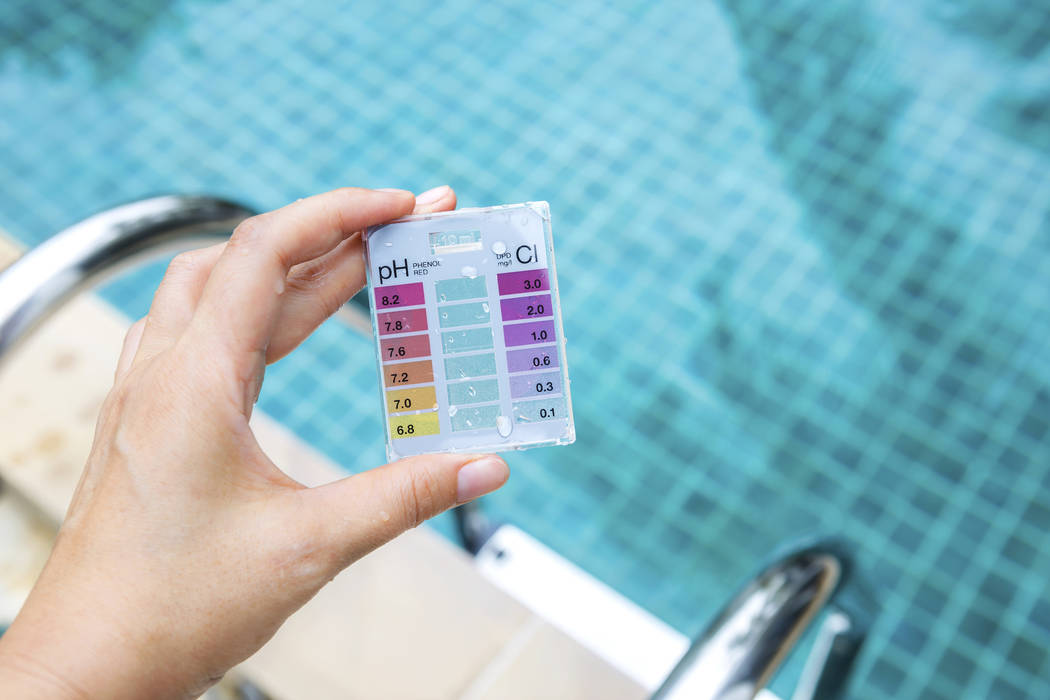Shock program rids your pool of yellow algae
Q: We have a pool and it looks terrible. In a short period, the water has gone from clear to yellowish, and, of course, nobody wants to swim in it for fear of catching a disease. What can I do?
A: It sounds like your pool has the color and texture of chicken soup, and I’m sure it feels icky to swim in it. Therefore, you must have yellow algae (aka mustard algae), and you can clear it up with your own “shock and awe” program.
Yellow algae loves the shade, and you will typically find it starting out along the pool’s south side and on vertical surfaces where sunlight can’t reach. Pool covers also can help algae grow, especially if they are not removed very often.
But algae also can grow on surfaces reached by sunlight, particularly if the environment is right. Low chlorine levels, not running your pool filter long enough or filtering the water with a dirty filter will help algae flourish.
You need to go to the pool store and buy some chemicals. The staff there will help with various products, but the one I like most is called Yellow Out. When used with super-chlorination, it means black death for yellow algae.
Before you go on your killing spree, though, you must first take a couple of steps. The first is to clean your filter because you want to get maximum flow and pressure through it. Next, you want to balance the water, and that means getting the pH and chlorine levels right. These probably will be different than your everyday levels, so read the label on the chemicals you choose and adjust them accordingly.
For Yellow Out, it is recommended that the pH be adjusted to at least 8 and the chlorine level to between 2 and 2.5 parts per million. These represent an increase over your everyday levels.
The thing I like about Yellow Out is that you don’t need to brush down the pool as you might have to with some products. Less work means more fun. You might notice that after adding the algae product, the water might become cloudy. This is dead algae, and it will be filtered out of the water.
After adding the product, super-chlorinate the water using 2 pounds of chlorinating granules per 10,000 gallons of water. You can get a rough approximation of gallons in your pool by using this formula: Multiply length by width by average depth — this produces the volume of the pool in cubic feet — and then by 7.48 — this converts the cubic feet to gallons.
The result won’t be exact because you’re estimating the average depth, and your pool probably isn’t a perfect rectangle. But because you’re applying chemicals in increments of 10,000 gallons anyway, it needn’t be precise. Add the granules around the perimeter of the pool and let the pump run for 24 hours.
You will super-chlorinate the water two more times, once 12 hours after the first chlorination and the next after 24 hours. Test the water after the last chlorination to see where the levels are.
You might expect the level of chlorine to be off the charts, but during the algae-killing process, you will use up a ton of the chlorine.
Balance the water again and add any necessary chemicals. Finally, clean the filters again.
Just make sure you regularly balance your water, and if you see problems develop, run to the pool store before it gets out of hand.
Mike Klimek is a licensed contractor and owner of Las Vegas Handyman. Questions may be sent by email to handymanoflasvegas@msn.com. Or, mail to 4710 W. Dewey Drive, No. 100, Las Vegas, NV 89118. His web address is www.handymanoflasvegas.com.
Do-it-yourself
Project: Yellow algae removal
Cost: $20-$50
Time: 24 hours
Difficulty: ★























